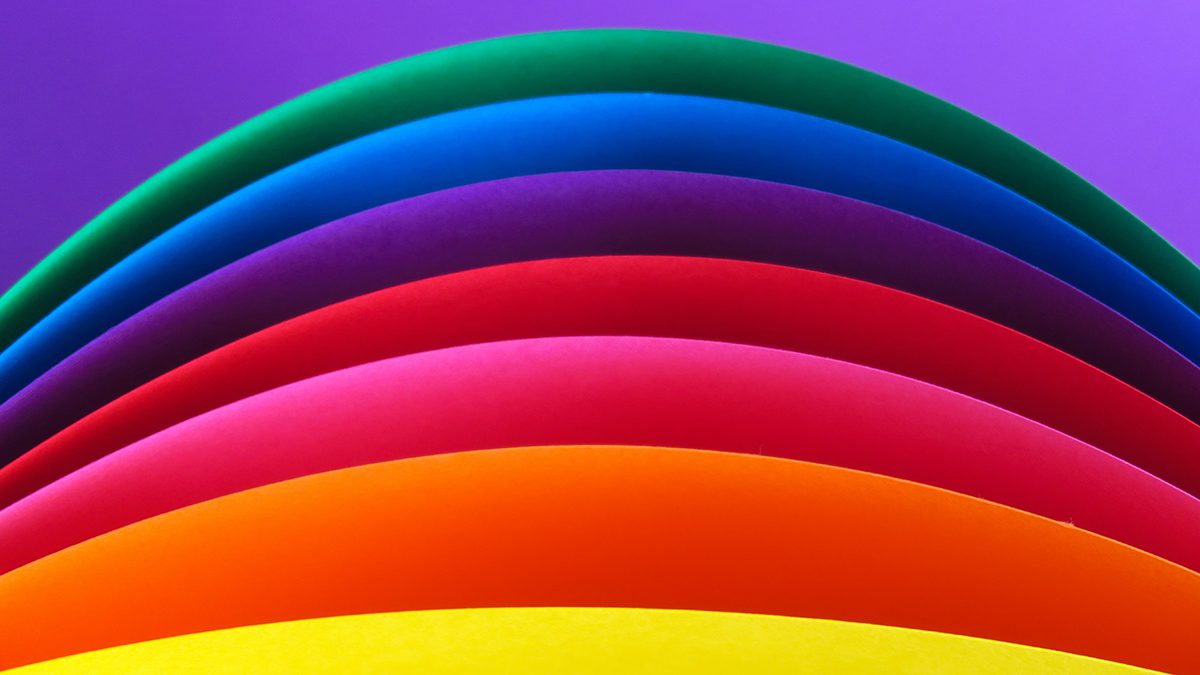Colour in branding: is it really black and white?

Many successful brands take ownership of certain colours in people’s minds. But are colours really that powerful when it comes to people’s perceptions, or is it just a pigment of our imagination?
• • •
(Photo by Daniele Levis Pelusi on Unsplash)
The ‘laws’ of colour are highly subjective, especially when it comes to different cultures. Take yellow, for example. It can be suggestive of ‘optimism’, ‘friendliness’, and ‘warmth’ (think Chupa Chups). But in America you can be a “yellow-bellied” coward, and in Germany people go yellow, not green, with envy.
Always take the time to find out what associations your market has certain colours before going all-in on it. It could work for you, against you, or provide you with an excellent opportunity to subvert and recontextualise.
• • •
Colour works elusively. While it’s best to exercise some caution in relying too heavily on your choice of colour to spark fixed emotions, or to do the leg-work of your brand’s personality, it’s certainly worth taking seriously for your business’ fuschia success.
• • •
(Photo by Daniele Levis Pelusi on Unsplash)
Quick thought experiment: picture rich red and golden yellow alongside each other. Do you get a sudden urge to gorge on salty french fries? Now imagine that same rich red next to polar white. Do your faculties fizz with the sense memory of a cold, sugary drink on a warm evening?
Branding aims to establish long-term positive emotional connections in customers’ minds, creating a sense of relationship which makes them choose you and your product over your competitors. Colour is an essential building block in this process, with statistics that show a whopping 85 percent of consumers cite colour as the primary reason they actually choose to buy a certain product. McDonald’s even launched a series of ads recently that rely entirely on abstractions of their brand colour palettes for recognition.
Some people believe the process of selecting brand colours is more science than art: 99designs has had the novel idea to create a brand colour generator that utilises a range of sliding scales to automate the process of finding the perfect colour for your logo. Despite the simplicity on offer here, colour selection is deceptively difficult to get right.
Distinctively different
There are numerous colour clichés to be aware of and avoid. For example, many banking brands, such as Barclays, Citi, RBS and Goldman Sachs, are predominantly blue brands because it’s a colour that’s representative of trustworthiness and dependability.
On the one hand, this has resulted in a fairly homogenous sea of blue banks. On the other hand, these emotional associations have been muddied by numerous financial catastrophes and duplicities, which have come under mainstream scrutiny through films such as The Wolf of Wall Street and The Big Short. Perhaps it’s better to go your own colourway…
Colour your intent
Despite many popular associations, there are no standardized correlations between specific colours and emotions – exceptions to the rules of colour go on, and on. But the smartest brands see this as an opportunity to do something different, truly making a colour their own.
Consider Apple: their use of achromatic grey has become associated with youth, elegance, and modernity. But grey as a colour does not typically conjure up these complex and abstract traits. It’s as clear as the sky is blue – colours don’t mean just one thing, and any brand that wants to stand out should be confident about going against traditional colour values.
All in the mix
The use of red in the #SeeingRed campaign film for Hey Girls is the result of scientific research into “approach-motivated emotion”. It’s used here as part of a subconscious call to arms, designed to “make everyone angry about period poverty”.
This role of colour here works in combination with multiple elements, including onscreen instructions that invert the breathing techniques of meditation apps. A powerful visual language with a memorable, dominant colour, can help you to find deeper connections with your audience.
It’s all relative
The ‘laws’ of colour are highly subjective, especially when it comes to different cultures. Take yellow, for example. It can be suggestive of ‘optimism’, ‘friendliness’, and ‘warmth’ (think Chupa Chups). But in America you can be a “yellow-bellied” coward, and in Germany people go yellow, not green, with envy.
Always take the time to find out what associations your market has certain colours before going all-in on it. It could work for you, against you, or provide you with an excellent opportunity to subvert and recontextualise.
• • •
Colour works elusively. While it’s best to exercise some caution in relying too heavily on your choice of colour to spark fixed emotions, or to do the leg-work of your brand’s personality, it’s certainly worth taking seriously for your business’ fuschia success.
• • •
(Photo by Daniele Levis Pelusi on Unsplash)

